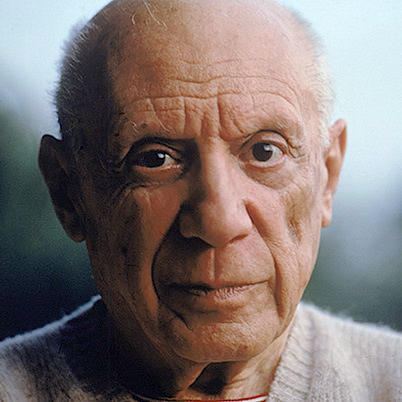Exploring the Art of Patricia Piccinini: A Deep Dive into the Extraordinary
Patricia Piccinini's art offers a compelling exploration into the intersections of technology, biology, and human emotion. Renowned for her hyperrealistic sculptures and installations, Piccinini’s work invites viewers to contemplate the nature of humanity and our evolving relationship with the world around us. Her practice is characterized by its use of innovative techniques and materials, creating lifelike yet fantastical figures that challenge traditional boundaries of art.
The Evolution of Patricia Piccinini's Artistic Vision
Patricia Piccinini’s artistic journey is marked by a continual evolution in style and thematic exploration. Her work often features surreal, otherworldly creatures that blur the line between human and non-human, natural and artificial. This exploration is deeply rooted in her fascination with the advancements in biotechnology and genetic engineering. Piccinini's art is not merely about aesthetics but also about sparking a dialogue on how these scientific developments impact our perception of ourselves and our place in the world.
Piccinini’s early works already hinted at her fascination with the grotesque and the beautiful. These pieces often presented a hybrid of the organic and synthetic, suggesting an alternate reality where human and non-human life forms coexist and interact. Her approach has since matured into a more nuanced examination of these themes, reflecting broader societal concerns about the implications of technological progress.
Thematic Exploration: Technology and Humanity
Central to Piccinini’s art is the theme of technological advancement and its impact on human life. Her sculptures often feature hybrid creatures that are part human, part machine, or part animal. These figures evoke a sense of uncanny realism, prompting viewers to question what it means to be human in an era where technology increasingly intertwines with biological life.
One of Piccinini’s most notable series, "The Comforter," features figures that resemble both futuristic and fantastical beings. These sculptures are designed to be both endearing and unsettling, reflecting our complex emotions towards emerging technologies. Through this series, Piccinini addresses the anxieties and hopes associated with technological progress, suggesting that our creations, while extraordinary, also carry with them the weight of our fears and desires.
The Aesthetics of Patricia Piccinini’s Sculptures
Piccinini’s sculptures are renowned for their hyperrealistic detail. Each piece is meticulously crafted to create a lifelike appearance that blurs the boundary between reality and imagination. The use of silicone, fiberglass, and other materials allows Piccinini to achieve a level of realism that is both striking and unsettling. Her figures often have a tactile quality that invites viewers to engage with them on a sensory level, making the experience of encountering her art both intimate and immersive.
The textures and forms of Piccinini’s sculptures are carefully designed to evoke a range of emotions. The skin of her creatures, for instance, might be rendered with a hyperrealistic sheen that enhances their lifelike presence. This attention to detail serves to amplify the emotional impact of her work, encouraging viewers to confront their own reactions to the strange and the familiar.
The Role of Installation Art in Piccinini’s Practice
In addition to her sculptures, Patricia Piccinini also engages in installation art, creating environments that further immerse viewers in her imagined worlds. These installations often incorporate multiple elements, including her sculptures, sound, and video, to create a comprehensive sensory experience. By doing so, Piccinini enhances the narrative depth of her work, allowing viewers to explore her themes in a more immersive context.
One of her notable installations, "The Journey," combines sculpture with video projections and sound to create a multi-layered exploration of migration and transformation. This work reflects Piccinini’s interest in the dynamics of change and adaptation, both in biological and technological contexts. The installation format allows her to present her art in a way that encourages a deeper engagement with the themes she explores.
Public and Critical Reception of Piccinini’s Work
Patricia Piccinini’s art has garnered widespread acclaim for its originality and depth. Critics often highlight her ability to blend the grotesque with the beautiful, creating works that are both thought-provoking and visually striking. Her sculptures and installations have been exhibited in prestigious venues worldwide, including the Venice Biennale and the National Gallery of Victoria.
The public reception of Piccinini’s work is equally enthusiastic, with many viewers expressing a profound emotional response to her art. Her ability to evoke empathy and provoke contemplation makes her work particularly impactful. The combination of meticulous craftsmanship and thematic richness ensures that her pieces leave a lasting impression on those who encounter them.
The Future Directions of Patricia Piccinini’s Art
Looking ahead, Patricia Piccinini continues to explore new directions in her artistic practice. Her recent works have increasingly engaged with issues related to environmental change and the ethical implications of scientific advancements. By addressing these contemporary concerns, Piccinini remains at the forefront of discussions about the role of art in reflecting and shaping our understanding of the world.
Her commitment to pushing the boundaries of art and technology suggests that future projects will continue to challenge and inspire audiences. Whether through new materials, innovative techniques, or thought-provoking themes, Piccinini’s work promises to remain a vital and influential part of the art world.
In summary, Patricia Piccinini’s art represents a compelling convergence of technology, biology, and emotion. Through her hyperrealistic sculptures and immersive installations, she invites viewers to engage with profound questions about the nature of humanity and the impact of technological progress. Her work is a testament to the power of art to explore and reflect on the complexities of the contemporary world.




